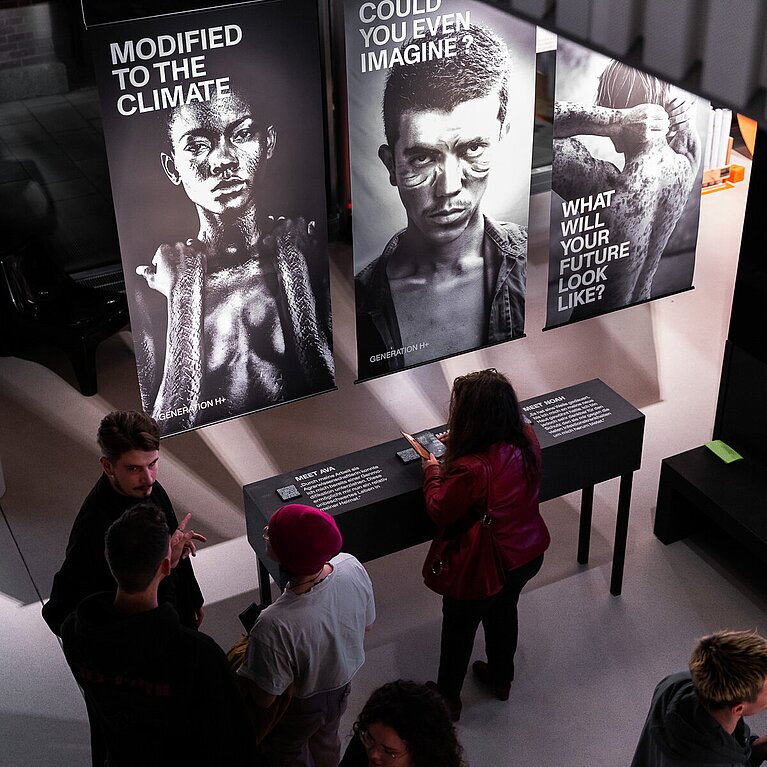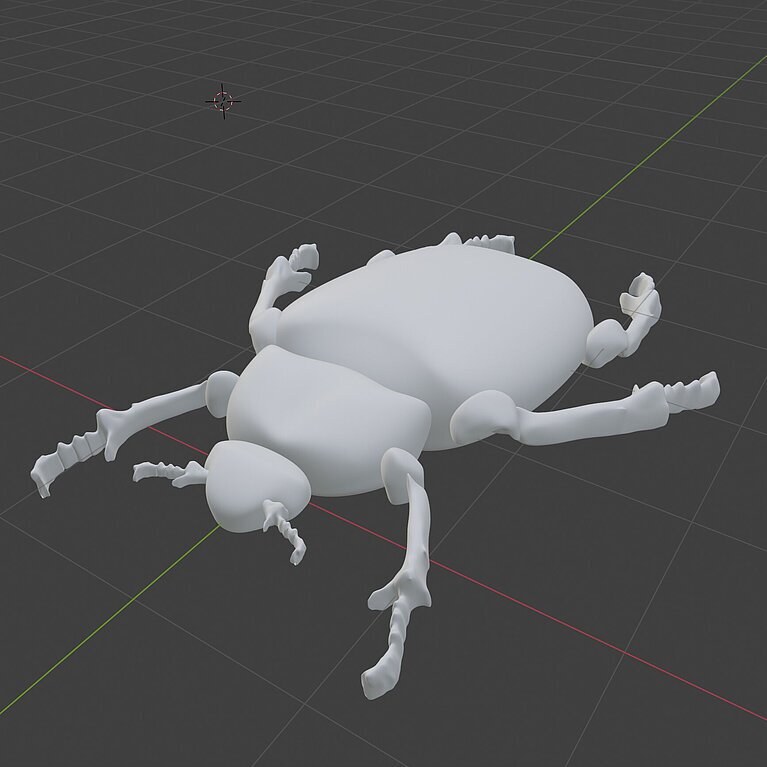

Vibrant space for thought: founding the Design Cultures Institute
Design research has experienced an upswing in recent years. At the head of the field in Bavaria is the Design Faculty at Hochschule München University of Applied Science (HM). But what kind of research takes place at HM’s Design Cultures Institute for Applied Design Research (dci), part of Bavaria’s state-funded Hightech Agenda scheme? “Cultural patterns make up our main theme,” explains the institute’s director, Prof. Markus Frenzl. “We use design to research cultures of perception, knowledge, action and innovation and company cultures. Our findings then serve as a catalyst for developing new ideas against the backdrop of social transformation.” The scope is deliberately broad, encompassing perspectives on environmental, economic and social transformation in equal measure. The new institute’s activities will be wide-ranging to reflect the fact that design permeates our entire lives.
Markus Frenzl describes design as “practice that fosters identity and culture with its own culture of knowledge and research.” Pointing out that culture is not something that can be prescribed, he explains that the institute does not itself drive cultural change; instead it focuses on the phenomena of such change, on the cultural patterns that, when further developed, are rendered “able to make cultural connections and thus lead to new ways of life, manufacturing technologies and ways of understanding.”

Research starts from three main focal areas. The topic of “Participation, Co-Creation and Futures Literacy in the Context of Social Transformation,” for example, links to a master’s project which identified research drivers for the HM: UniverCity project “Creating NEBourhoods Together.” In the project, master’s students surveyed residents in the Neuperlach district of Munich to find out about their living conditions and their desires, with the goal of “working together to design attractive, ecological and future-facing neighborhoods.”
A further research topic, “LESS – Principles, Potential and Problems of Product Avoidance,” explores the role that sufficiency can play in architecture and design. Finally, “Areas of Potential in Bavarian Craft Cultures” seeks to research vanishing craft techniques and expertise in materials and workmanship. Because old methods and traditions have always embraced circular economy principles, they may reveal answers for the world of tomorrow. Bavaria’s history and self-image is thus throwing open fresh new perspectives for products, companies and services of the future.
An undogmatic, direct approach that involves individuals and communicates with founders and institutions offers enormous potential for design research – and beyond. Taking familiar cultural patterns as a starting-point, the dci thus provides “impetus for social, ecological, technological or entrepreneurial futures.” Alongside Prof. Markus Frenzl, the core team at dci is made up of Prof. Dr. Eileen Mandir, HTA Professor of Systemic Design in the Context of Social Change and Transformative Processes, and two research associates. The institute has an ambitious goal: “We aim to create a vibrant space for thought that will provide a home for discursive practice at the Design Faculty here at HM,” says Markus Frenzl. The new step by HM will thus not only strengthen its design research; it will create space for an element that has always been intrinsic to design: the ability to identify perspectives for the future.

Design for the planet
“We’re now firmly in the Anthropocene, an age in which humans are significantly influencing the changes occurring on our planet and profoundly impacting the earth by their actions,” explain Matthias Edler-Golla and Florian Petri. Both are professors at Hochschule München University of Applied Science (HM), one specializing in interaction design and sustainability, the other offering a perspective rooted in technical industrial design. Both have years of experience in teaching sustainability-focused projects. “Next Nature Design” is not their first joint course – but may well be their most crucial. It delves into the big picture, asking what purpose design can pursue in the Anthropocene. Can we, should we even continue producing in the way we have been doing? The seminar and subsequent exhibition will address sustainability in all its many facets. No question is too off-the-wall, no project too fantastic.
Edler-Golla and Petri challenge their students to push the boundaries of human-centered design. They postulate “planet-centered design, which requires us to embrace new ways of thinking, new collaborations, the willingness to work with other living beings in a co-creative relationship, and the boldness to unite culture, technology and nature.” This big picture could hardly be any bigger. Given this, the professors firmly believe in direct dialogue as the seminar process. However, first of all the students themselves need to become experts. Each team investigates different issues. The 30 photographers and product, graphic and interaction designers work, discuss and design together.

„WE PROVIDE IMPETUS FOR NEW IDEAS IN A RAPIDLY CHANGING WORLD.“
The seminar aims to unlock spaces for creative thought that go beyond considerations of commerce. As Matthias Edler-Golla points out, “We’re not an agency, or an extended workbench for industry. We provide impetus for new ideas in a rapidly changing world.” That is precisely one of the tasks confronting the designers of the future: the need to assess projects accurately and turn them down if necessary, to reach out to people and bring meaning to the processes they design. Matthias Edler-Golla and Florian Petri are well aware that there is no single correct solution; instead, there is a web of mutually reinforcing impetuses. Many different paths are unlocked in this way. Even lack of knowledge can prove to be a strength when it provokes a questioning mindset.
“Cohabitation” is the name for the new coexistence of humans and nature. Ultimately, there are “only positive visions.” But there is method behind this apparently unrealistic, even naïve notion. The professors explain that anyone can pen a dystopia, but our present age needs new ways forward. Instead of perfect products, which – as they point out – do not exist, they are seeking something more like perfect prototypes, which only unfold their perfection when put to use by real-life humans and the natural environment around them. Suddenly, space is opened up for new careers – a carpenter-designer, say, who allows users to try out a range of variations. The role of the designer is currently in flux. In the age of modernism, that role primarily revolved around striking a pose as heroes of progress, many engaged in creating ever-sleeker variations of tomorrow, right down to arrow-swift pencil-sharpeners. But styling alone is no concern of serious designers. They seek more. They seek, as far as their abilities allow, to make the world better – or at least preserve it. To ensure that the “age of the human” does not become the “age of human extinction.”
